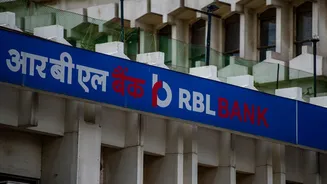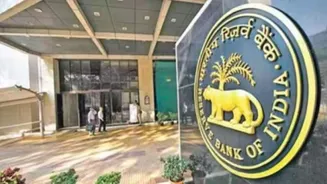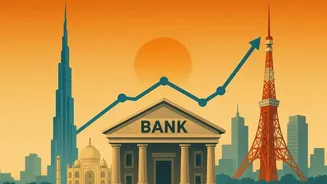Market Sentiment Overview
The Indian stock market showed resilience and optimism, particularly during special trading sessions. The Sensex and Nifty experienced gains, reflecting
positive investor sentiment. This favorable atmosphere was supported by record-breaking sales during the Diwali festive season, which reached an impressive ₹6 lakh crore. Furthermore, the beginning of the Samvat 2082 era brought additional positive momentum to the markets. Key financial institutions, such as the Reserve Bank of India (RBI), sold USD 7.7 billion to stabilize the rupee's volatility. This proactive step by the RBI contributed to the overall stability and growth observed in the financial landscape, fostering investor confidence across sectors.
Infrastructure and Industry
Several sectors demonstrated growth and investment. The industrial and warehousing leasing market reached record highs, indicating strong activity in the real estate sector. The government's focus on infrastructure development continued, with key infrastructure growth recorded at 3% in September. There were specific developments in the energy sector, such as EHV tower failures, prompting governmental intervention and directives for utilities to improve maintenance practices. Additionally, the UDAN scheme saw significant progress, connecting 649 air routes, and plans are underway for further expansion. These combined efforts are contributing to the enhancement and expansion of critical infrastructure components across the nation.
Investment and Trade Dynamics
Foreign investment continues to play a significant role in India’s economic narrative. Foreign investment inflow reached ₹50,000 crore. The UK business sector has shown interest in broadening its Indian strategies post-FTA. However, not all trade activities were positive, as China filed a WTO complaint against India. The agreement between India and Bangladesh was canceled, leading to disputes, and there were compliance issues for businesses regarding US trans-shipment tariffs. Conversely, in Sri Lanka, the Adani and Colombo Terminal project led the way in FDI. These contrasting investment and trade dynamics shape the landscape of India's international economic relations.
Sector-Specific Highlights
Various sectors provided interesting insights. The IT sector experienced hiring stabilization with improved campus intake. The festive season fueled a major surge in e-commerce activity, showing substantial growth. The GST cuts on apparel boosted revenue growth to approximately 13-14%. The pharmaceuticals sector saw positive developments, with Dr. Reddy's Srikakulam unit receiving USFDA VAI. The automotive industry experienced a productive time, with Tata Motors delivering 1 lakh vehicles during the festive season. Other sectors, such as agriculture, also presented trends, with fluctuating futures prices in the commodities market like guar gum and coriander.
Financial Market Updates
Several companies and financial instruments experienced notable activity. Seven companies received Sebi approval for IPOs, including Shadowfax and Rayzon. RBL Bank shares increased due to an Emirates NBD deal. PNB expects ₹1,500 crore in treasury income for Q3. The rupee strengthened against the US dollar. Conversely, RBI intervened to stabilize the rupee by selling USD 7.7 billion. Zinc and aluminum futures showed gains, influenced by demand and new bets respectively. The market’s dynamism was further reflected in the Muhurat trading session, held on Diwali, showing the continuous evolution and adjustments within the financial environment.
Regulatory and Policy Insights
Government policies and regulatory frameworks influenced several areas. The PFRDA released a draft for a pension wealth accumulation framework. The government addressed issues within the power sector, specifically concerning EHV tower failures. GST reforms had impacts, with paper imports potentially threatening the industry. The CCI cleared Torrent Pharma's JB Chemicals stake acquisition. The government's actions also included discussions concerning EU-India strategic agendas. These steps underline the government's role in guiding India’s economic growth, influencing multiple facets of business operations and investments.


















